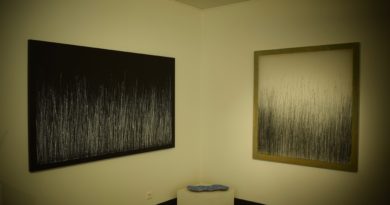Safety concerns over some fibre-based insulation products
A new report entitled “Is it time to legislate the Mineral Wool industry more tightly at EU level” was launched yesterday at the Brussels Press Club. The report focuses on the health concerns surrounding mineral wool (or MMVF, Man-Made Vitreous Fibres), including carcinogenicity and
Introducing the study, the author Gary Cartwright who is the publisher of EU Today said: “At a time when insulation of homes and workplaces are high on the political agenda, we need to take a much closer look at one of the common insulation products, mineral wool.”
He went on to say that many people probably do not know which insulation product has been used in their home, adding, “The chances are it could be a form of man-made vitreous fibres (MMVF) or synthetic vitreous fibres (SVFs).
“These are a class of insulating materials used in residential and industrial settings. They are made primarily from glass, rock, slag or clay and include fibreglass, mineral wool, and refractory ceramic fibres. The most common term for them is mineral wool. These products are known to release airborne, respirable fibres during their production, use and removal, which cause health concerns for those who use the products,” he said at the launch.
Back in 1988, he said that an earlier form of these insulation products was classified as a possible carcinogen, hazardous to human health, by the International Agency for Research on Cancer (IARC) of the World Health Organisation (WHO).
The study he authored says that the mineral wool industry reacted by developing a newer version of glass and stone wool compositions with increased biosolubility, thereby achieving in 2002 a declassification of certain MMVF materials as carcinogenic, to the relief of that industry. However, Cartwright said there are concerns that the newer versions of these products have actually not improved as much as had been hoped back in 2002.
He told a news briefing, “There is evidence that the tests done to achieve that classification reversal for most mineral wool were not conducted in a way that properly assessed the actual commercial product that is used for insulation. Real world production inherently uses organic oil and binder (such as phenolic resin), which is sprayed onto the stone melt directly in the fibre spinning chambers. The primary mat is layered to give the product the required weight per unit and passes through an oven, which sets the thickness of the mat and cures the binder.
“The product is then air-cooled and cut to size before packaging. Testing mineral wool without binder is misleading. It is not a real examination of the final product that workers interact with. Studies in 1995 deliberately removed binder from the commercial product,” said Cartwright.
He added, “In vivo studies that took place between 2000-2002, which were key to the IARC declassifying certain MMVF as carcinogenic, were also conducted without binder or oil, giving misleading results.
“In 2005, an article in the journal Regulatory Toxicology and Pharmacology, co-authored by an expert from the German Federal Institute for Occupational Safety and Health, questioned the IARC’s methodology. In 2017, another study published in the renowned journal Particle and Fibre Toxicology and made available by the US Library of National Medicine demonstrated that the average composition of modern stone wool MMVF is different from historic biopersistant MMVF – but to a lesser extent than expected. This 2017 study advised that the risk of modern stone wool needed to be revisited based on in vivo studies of MMVF as they are marketed (i.e. with binder),” the report’s author said.
Cartwright went on, “Concerns regarding MMVF or mineral wool are not limited to the issue of the level of carcinogenicity. Mineral wool is known to cause skin and lung abnormalities. Inhalation can lead to pulmonary fibrosis, a chronic disease accompanied by breathlessness that cannot be cured.”
He said, “Marjolein Drent, a leading pulmonologist, told Dutch TV news show ‘Altijd wat monitor’ on NCRV on 3rd September 2013: “The effects of the fibres of glass wool and stone wool can be compared to those of asbestos. In the past we did not know asbestos was very dangerous. The results of the effects of fibres in glass wool and mineral wool are only being seen right now, so we must deal with it carefully. The point is that these substances are harmful. But people do not realise it sufficiently. And that is something we have to worry about. It is too easily accepted that ‘we have a replacement for asbestos’. But the replacement may not be as good as we thought it was at the beginning and there is insufficient attention to this fact.”
The new study also quotes patient Henk Batema, who worked as an independent contractor in construction for years, explaining his medical condition to in the same Dutch television documentary, saying, “My lung capacity is reduced by 75%. I can still walk, just a little bit, for example, but working is not possible at all, anymore.”
In conclusion, Cartwright said, “It seems reasonable that tests be conducted again, this time ensuring that the product is tested as it is sold and used, including the organic oil and binder. Otherwise, those involved in the production, use and removal of mineral wool will not have their minds at rest about potential health implications.”



